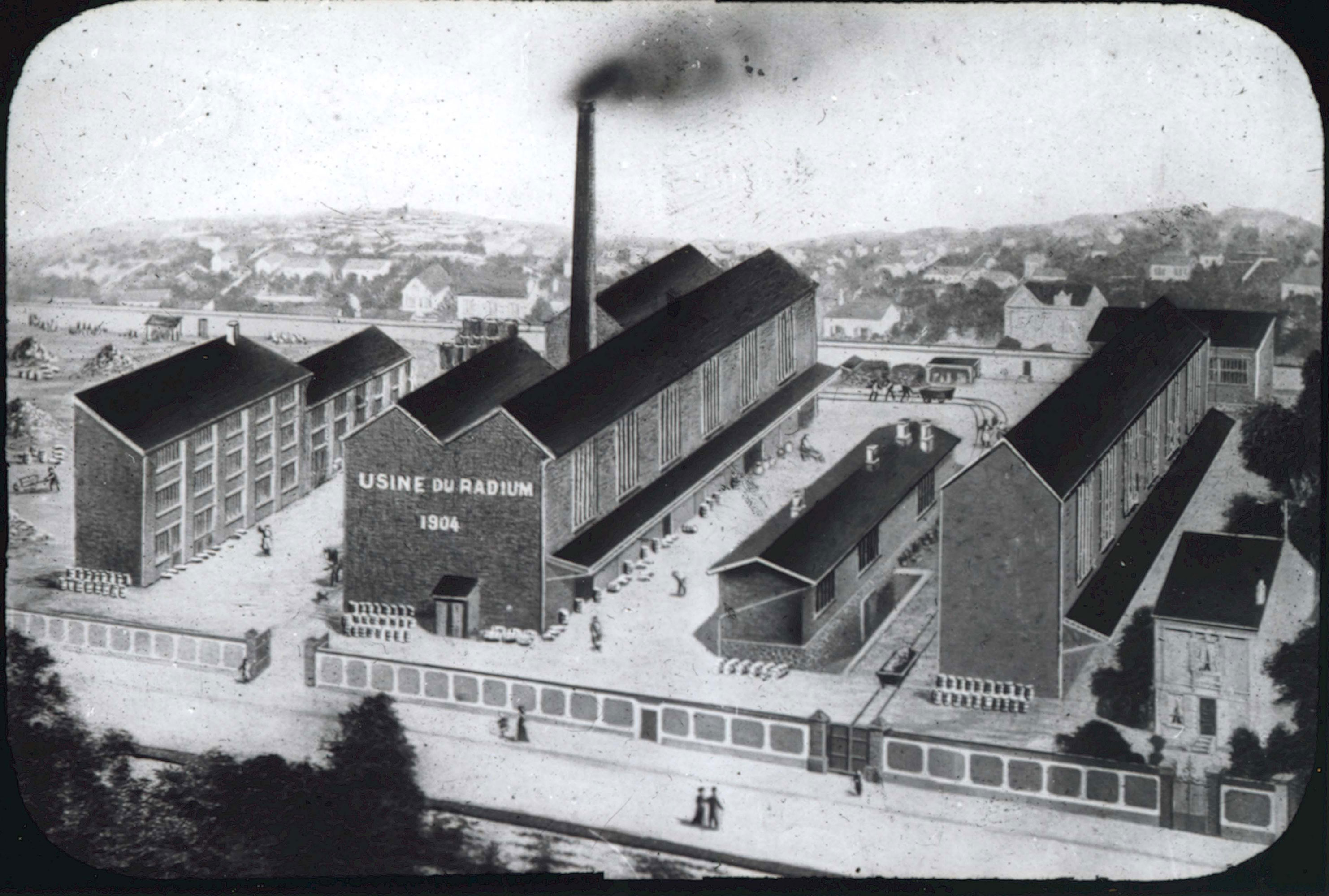
Uranium, an expensive element, had already been widely known since the 19th century. It was then sourced mainly from the mines in Joachimsthal (now Jáchymov), Bohemia,1 which were operated by the Austrian government. At this time, before radioactivity was discovered, uranium was used in manufacturing, for instance as a yellow coloring agent for leather, or to give a greenish-blue tint to the world renowned Bohemian crystal.
In nature, radium is produced by the decay of uranium. This is why it is found in very small amounts in uranium deposits. To extract non-negligible quantities of radium, tons of uranium ore must be chemically processed. This is why Marie Curie wrote, We could not make further progress without the aid of industrial means of treating our raw materials... As early as 1899, Pierre Curie succeeded in organizing a first industrial experiment, using for it a chance installation placed at his disposition by the Central Society of Chemical Products, with which he had had relations in connection with the construction of his balances....The radium-bearing barium was extracted in the factory, and I carried on its purification and fractional crystallization in the laboratory.2

Around 1904, industrial radium extraction in France took on a new scale. The Curies worked together with industrial chemist Émile Armet-de-Lisle, who founded the Radium Salts plant in Nogent-sur-Marne near Paris. Over the course of the 20th century, many industrial and medical applications for radium were discovered and it became one of the world’s most expensive elements. In the 1920s, one gram of radium salts cost around $100,000.





















